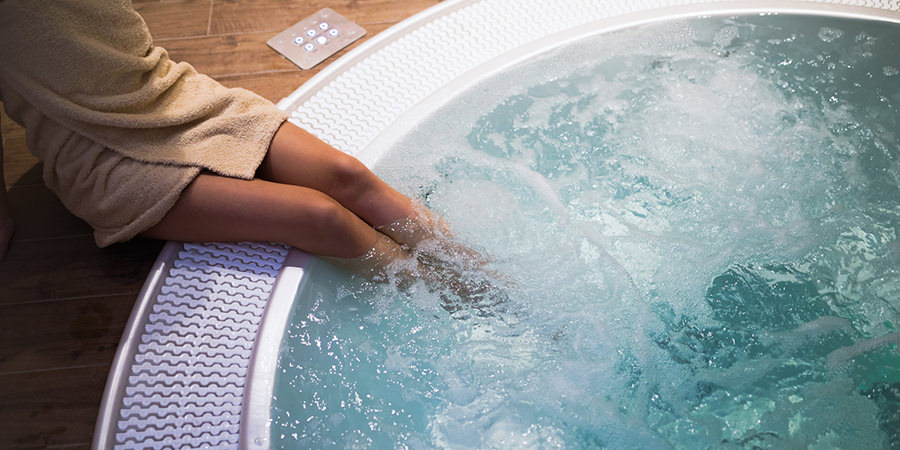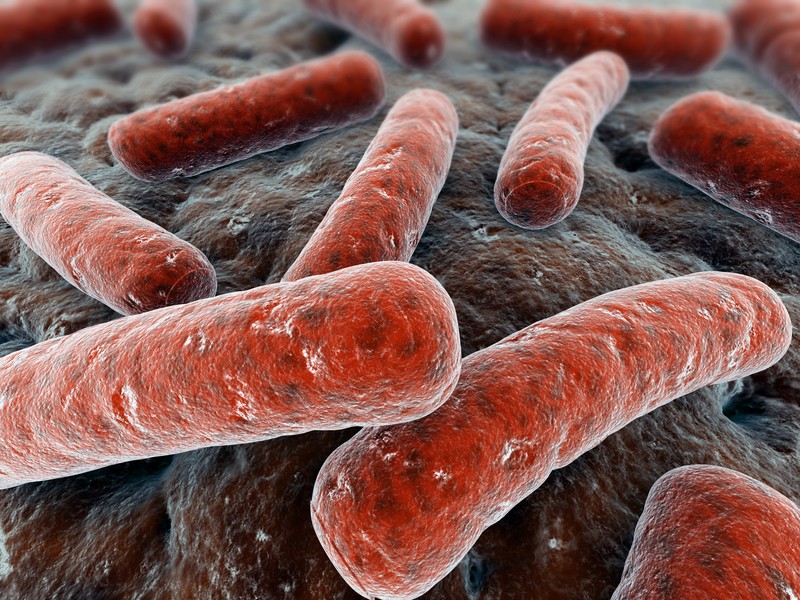
Have you noticed your skin itching after you have been in your hot tub? Itchy skin is a common problem after a soak in the hot tub but what causes it and how can you prevent this annoying issue? I decided to do some research and this is what I found out:
So, why does my hot tub make my skin itch? There are two main reasons why your skin itches when you use your hot tub. The first cause is the chemicals used to sanitize the water. The second cause is bacterial overgrowth. If you’re using too many chemicals or not enough, the result will be skin discomfort and itching issues.
A major culprit of itchy and dry skin after enjoying time in your hot tub is the sanitizer that you use. Bromine and chlorine are used to kill the bacteria that live in the warm water. However, if you’re sensitive to these chemicals or use too much of them, you can find your skin suffers.
Yet, the bacteria itself can cause skin conditions that result in itching and rashes, and if you don’t use enough chemicals in your tub, you could suffer from these and even worse health-related problems. The key, therefore, is getting the balance right.
Why Do Hot Tub Chemicals Make My Skin Itch?
Hot tubs are the perfect breeding ground for bacteria and unwanted contaminants. Germs breed in warm, wet conditions, and this makes any spa the ideal place for bacteria spread out of control. Unfortunately, if you bathe in a hot tub that has high levels of bacteria, you run the risk of becoming sick.
Itchy skin conditions such as hot tub folliculitis can be the result, or an even worse medical problem like Legionnaire’s Disease which could prove fatal. For this reason, it’s imperative that you use chemicals such as bromine or chlorine in your hot tub to kill the potentially harmful bacteria and ensure that your water is safe and hygienic for bathing.

Although bromine and chlorine are important to kill the unwanted bacteria in your hot tub, they are used in relatively high concentration. The amount used in your hot tub is considerably higher than the amount used to sanitize standard swimming pools. This means that if you tend to suffer from itchy, dry skin after swimming in a pool due to a sensitivity to these chemicals, the chances of you suffering from the same problem in your hot tub are extremely high.
A major problem associated with utilising these chemicals to sanitise your hot tub is that they’re known to cause skin irritation due to the salt compounds that they contain which dry out the skin. Many studies have been carried out that show chlorinated water irritates skin because it destroys Vitamin E and fatty acids in the body that are vital for keeping skin in good health.
Many people who suffer from dry skin conditions such as eczema use antioxidant Vitamin E supplements or fatty acid oils like flaxseed oil as a way of helping to combat their dry skin problem. If you suffer from a dry skin condition or if you have a sensitivity to chlorine or bromine, you will probably find that the chlorinated water causes you considerable discomfort during and after bathing in your spa.
How do I Know if the Level of Chemicals in My Hot Tub are Too High?
Now that you know that excess chemicals could cause itching and hot tub rash on your skin, it’s important to know whether the level of chemicals in your spa are too high. It’s vital to get the balance of chemicals right since too little will risk harmful bacteria in the water, while too much may cause you more discomfort.
A key warning sign that indicates there is too much bromine or chlorine in your hot tub water is that you’ll find your skin smelling of chemicals. If you detect the tell-tale odour of chlorine or bromine on your skin when you get out of the water, you can be confident that you’ve used too much.

You should take the time to frequently check the levels of chemicals in your hot tub to make sure that they’re within parameters that are both comfortable and safe. Chlorine should be between 2 – 4 ppm, while bromine should be between 4 – 6 ppm. The pH level of the pool should be between 7.2 and 7.8. You can check these levels easily by using the home testing strips – Amazon sell them here.
However, remember that a slightly higher level of bromine and chlorine is better than a slightly lower level. Taking a shower after your hot tub session will quickly wash those chemicals out of your hair and skin, while regularly washing your bathing suit will help to protect its fabric from damage from the chemicals.
Is My Itching Due to Bacteria?
Excess chemicals in your hot tub isn’t the only reason that your skin may be sore and itchy. The problem could be the opposite problem – excess bacteria.
If you’re suffering from itchy spots which then turn into blisters or a lumpy red rash around your hair follicles that appear worse in the area covered by your bathing costume, you may be suffering from Folliculitis or Pseudomonas Dermatitis. Commonly, this is known as hot tub rash, and it usually appears as a result of the bacteria Pseudomonas Aeruginosa.
While this germ is very common and the rash that it causes isn’t serious, the itching and discomfort can prove to be irritating. The rash will typically heal by itself, however, should it persist you should get medical attention.
If your hair follicles are damaged, you’re more likely to experience hot tub folliculitis. If you wear clothes which rub your skin or if you shave very closely, the hair follicles can be irritated. This will make them more susceptible to this condition. If you have a cut, scrape or wound on your body, you’re also more likely to experience an infection.

You can prevent bacteria from building up in your spa by using the correct level of chemicals as recommended by your hot tub’s manufacturer. Take care to thoroughly read the manual supplied with your tub and follow the instructions for sanitizing the water carefully so you can protect yourself and other bathers from unwanted health problems.
Could Dirty Hot Tub Bathers Cause My Itching Problem?
If you’ve ever been to a public pool or gym, you’ll almost certainly have seen signs that tell you to shower before you get in the hot tub. However, if you have one at home, it’s possible that you may not think it’s necessary. Yet, it’s just as important to shower before bathing at home as it is to shower at a public spa facility. This is especially the case if you’ve invited guests over to use your tub.
The reason for this is because the majority of people have around one 1/10th of a gram of feces in their gluteal fold. When this is multiplied by everyone who uses your hot tub, you can see how easy it is for the amount of fecal matter in your tub to increase dramatically. This isn’t just unpleasant and unhygienic but it can also cause infections and rashes that cause itching.
If you shower thoroughly before getting into your spa, these germs will be washed away and therefore, unable to get into the water to spoil your bathing experience. Showering afterwards washes off any germs you may have picked up in the water as well as any residual chemicals that could cause you further itching and soreness.
Related Questions
How can I treat itching skin after bathing in a hot tub? You can eliminate the itching you experience after getting out of your hot tub by showering immediately afterwards. After showering, you should apply a nourishing moisturizing lotion to your skin then allow it to absorb thoroughly before dressing.
One other way of preventing irritation of the skin is to reduce the amount of bromine and chlorine you use in your spa water. There are a number of alternative products available to buy these days that purify your water which only contain low concentrations of these two potentially irritating chemicals together with other substances which are mild on the skin to guard against bacteria proliferation.
Can Hot Tub Folliculitis Be Treated? Usually, this condition clears up within 5 to 10 days without any treatment. If your rash lasts for longer or you’re experiencing some other symptoms, see your doctor. People with cystic fibrosis or lowered immunity should see their doctor if they experience this condition since the bacteria that causes it may result in pneumonia in those individuals.
You could be prescribed topical medications to treat this condition, or you could use a home remedy such as applying white vinegar to the rash for 20 minutes twice a day. Avoiding scratching or shaving the affected area is also recommended to prevent irritation of the skin. Warm compresses applied to the rash can also soothe the pain and itching. In severe cases, oral antibiotics may be necessary to effectively treat this condition.

